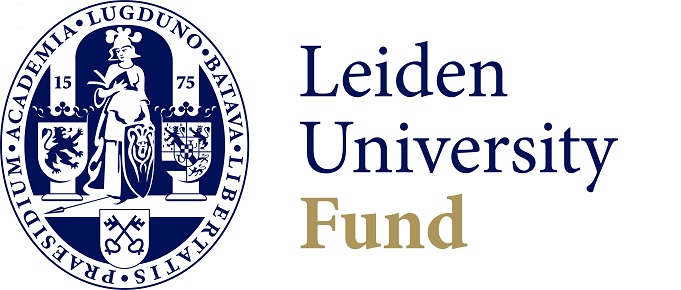
The Dutch were masters of forgeries and fake news in the seventeenth century
A book with a fake printer, a pamphlet with a treaty that does not exist and an execution print with a supportive crowd: just some examples of forgeries from the early modern Dutch Republic. They are exposed by LUC-historian Jacqueline Hylkema.

‘These are all extraordinary works,' says Jacqueline Hylkema, Assistant Professor of Cultural History at Leiden University College (LUC) and Senior Scaliger Fellow at the Scaliger Institute. We meet her and her research assistant Charley Bohlmeijer at the Special Collections of the Leiden University Library. On the table are three publications from the seventeenth century. What connects them is that all are forgeries and tried to lead readers astray.
'Take this book, the second edition of the Tractatus Theologico-Politicus by the philosopher Spinoza (1632-1677). The title page states that the work was published by one Henricum Künraht from Hamburg when in reality it was published by Jan Rieuwertsz in Amsterdam. This so-called “fake imprint” was already used in 1670 for the first edition of the work to hide Spinoza’s and his identity. Rieuwertsz expected that the work would be controversial and this was entirely correct: the book was banned soon after publication. In spite of the ban, Rieuwertsz published this second, by Spinoza corrected edition, in 1672. To hide that he had published an illegal book, he reset the title page of the first edition, with the same fake imprint and year of publication, 1670. As a result, the book looked like a left-over copy of the first edition.’

Mapping the Fake Republic
Spinoza's ‘double forgery’ is one of many works examined by Hylkema in the research project Mapping the Fake Republic (1550-1800). This research, which is funded by the Leiden University Fund, traces all forgeries printed in the Dutch Republic in the Special Collections. Hylkema: 'I particularly focus on works that are offered as authentic, but of which the contents are altogether fabricated. So fake histories, fake news, stories about journeys that were never made or about countries and peoples that never existed. I also look at duplicate forgeries - these are copies of pre-existing works, like pirate editions.'
Forgeries for political gain
Hylkema has three research questions. She looks at how forgeries related to the religious diversity in the Dutch Republic, how forgeries helped shape Dutch national identity and how forgeries were used as a strategic tool in political issues. This final theme applies to the other two works that Hylkema shows during the interview.
‘This pamphlet, now commonly known as The Eleven Articles, is from 1650 and is allegedly a treaty between the city of Amsterdam and the English politician Oliver Cromwell (1599-1658),’ says Hylkema. 'The treaty was concocted by the circle of Stadtholder William II (1626-1650) who didn't like the increasing power of Amsterdam and wanted to attack the city. That attack would have been justified by this treaty because shortly before, the Dutch Republic had decided not to do business with Cromwell and the treaty showed that Amsterdam had broken that agreement.’
'This print by Claes Janszoon Visscher from 1619 is political fake news’, Hylkema continues. 'It suggests that the execution of grand pensionary Johan van Oldenbarnevelt (1547-1619) was attended by a large crowd that supported his conviction. In reality, there were far fewer people as many citizens knew that Oldenbarnevelt’s trial had been very sketchy. Visscher tried to play that down to legitimize the trial and the execution.'
-
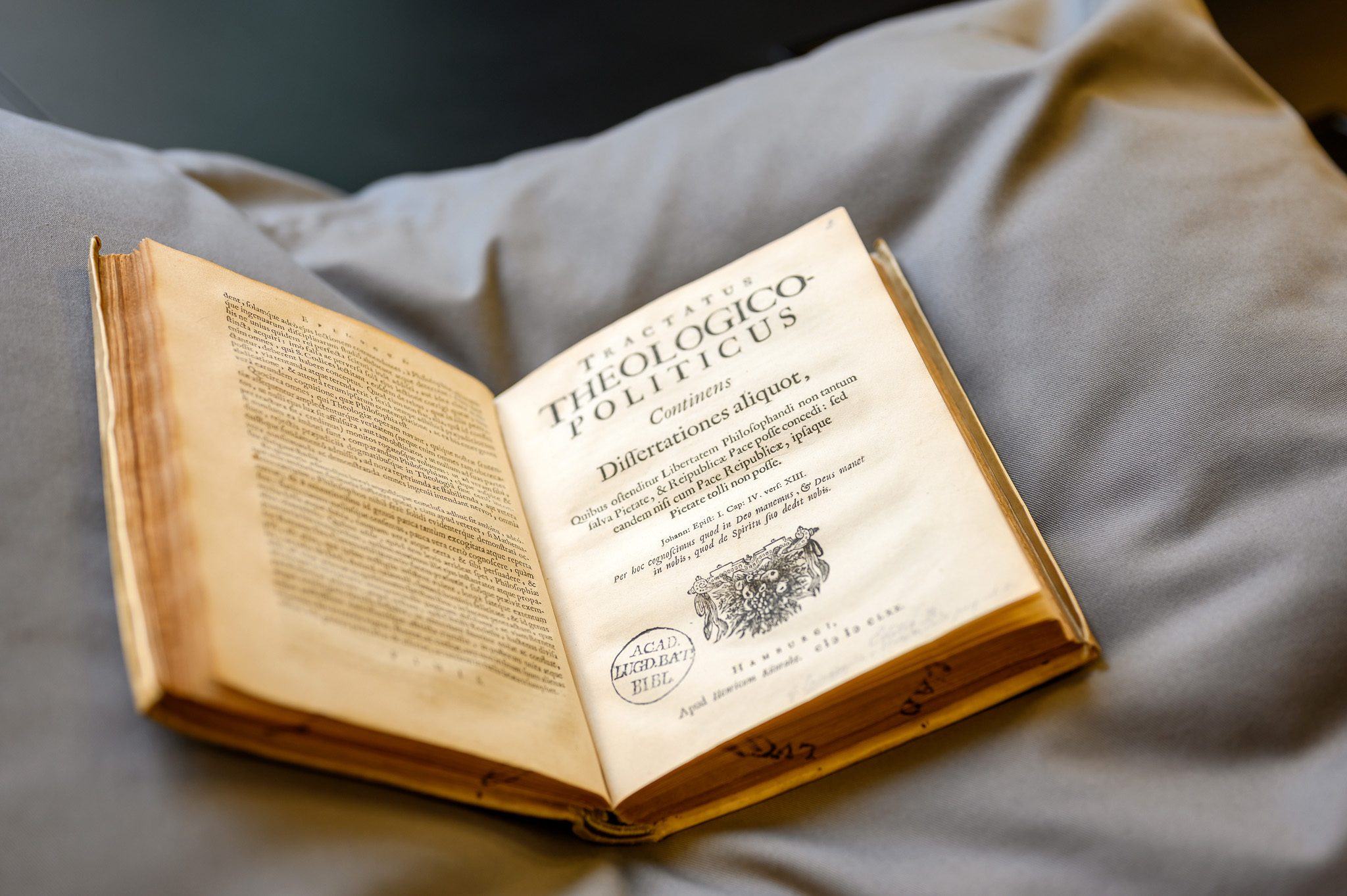
Spinoza's Tractatus Theologico-Politicus (1672) -
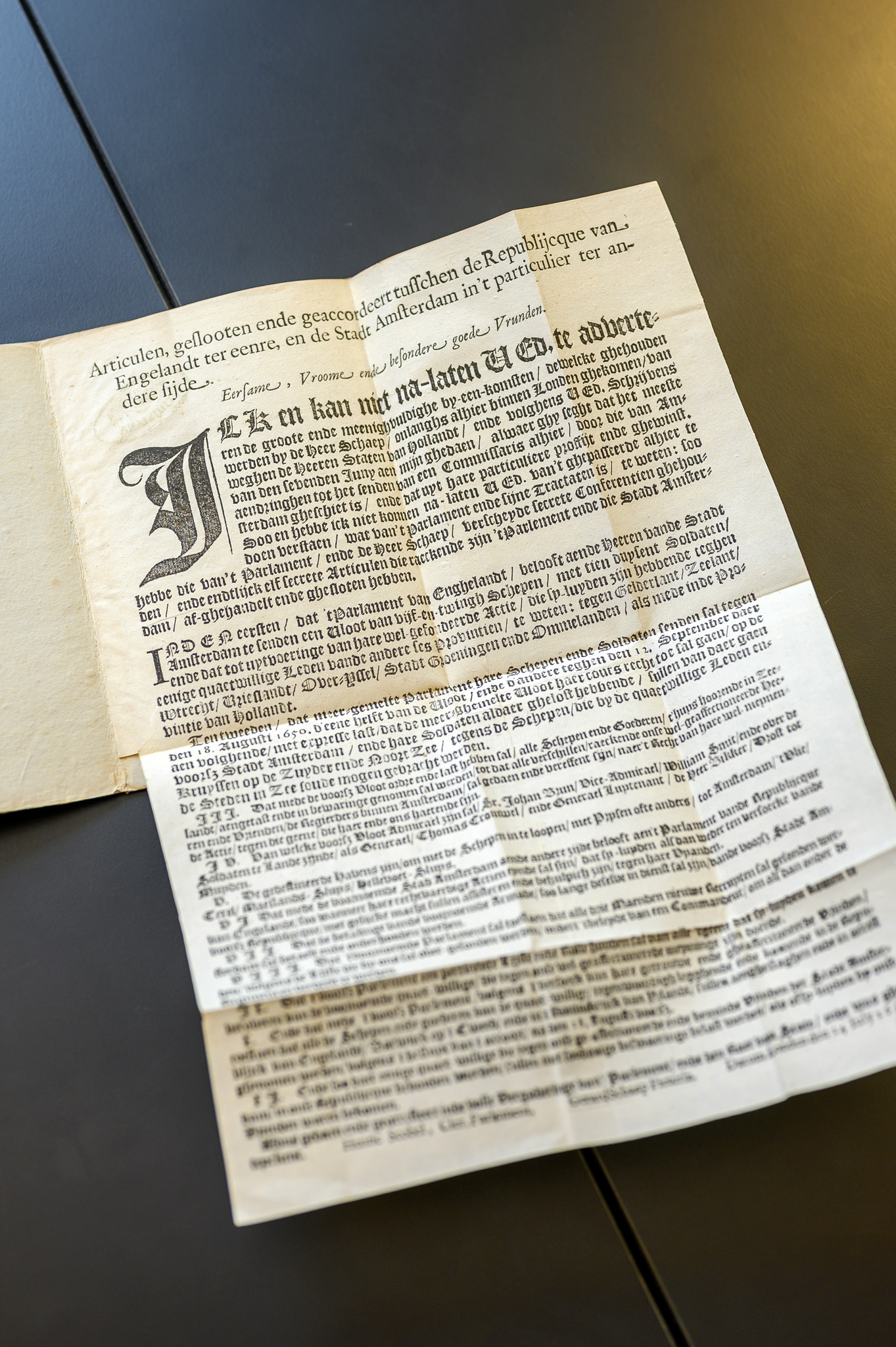
The Eleven Articles (1650) -
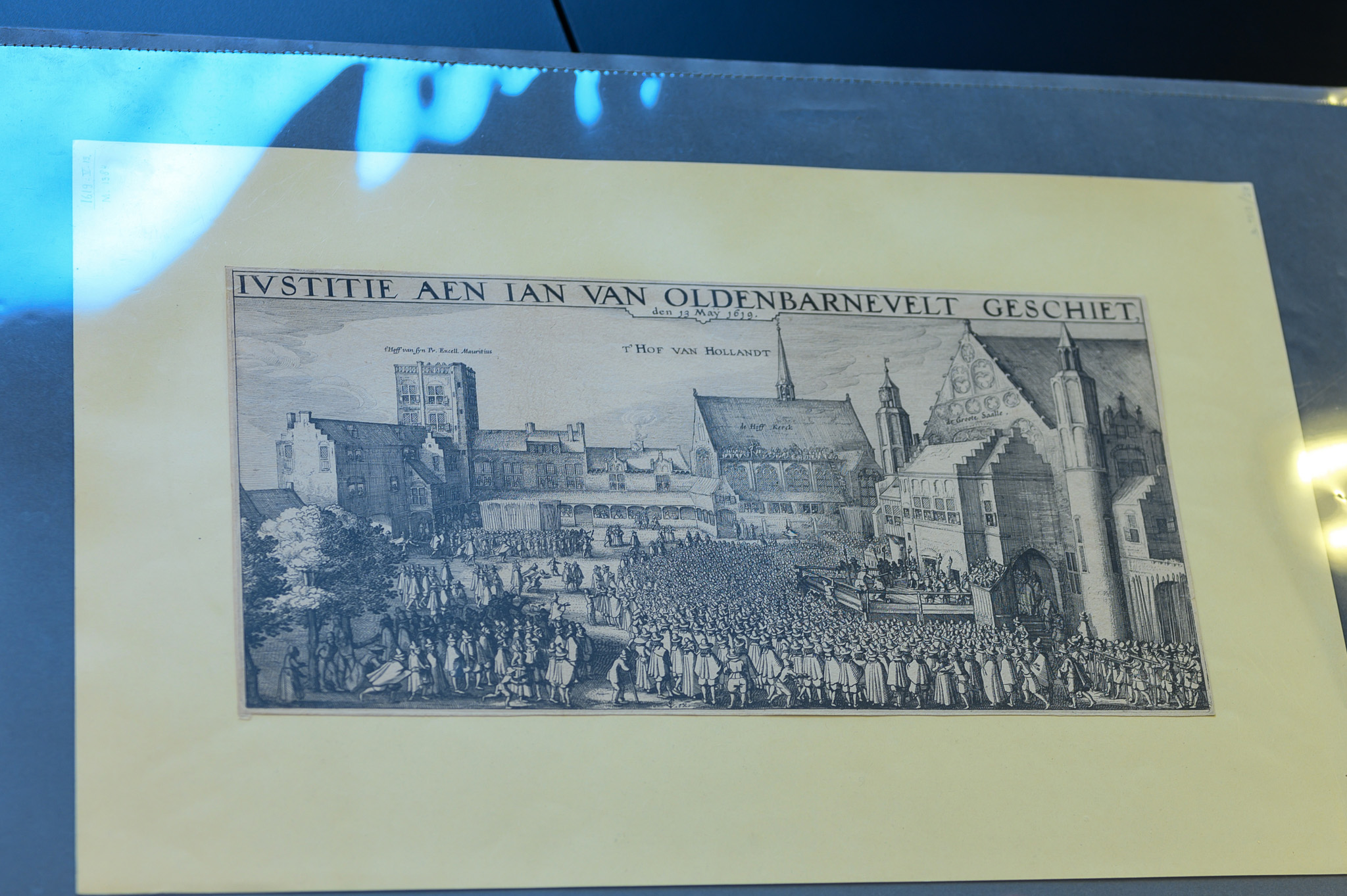
The print by Claes Janszoon Visscher on the execution of Johan van Oldenbarnevelt (1619) -
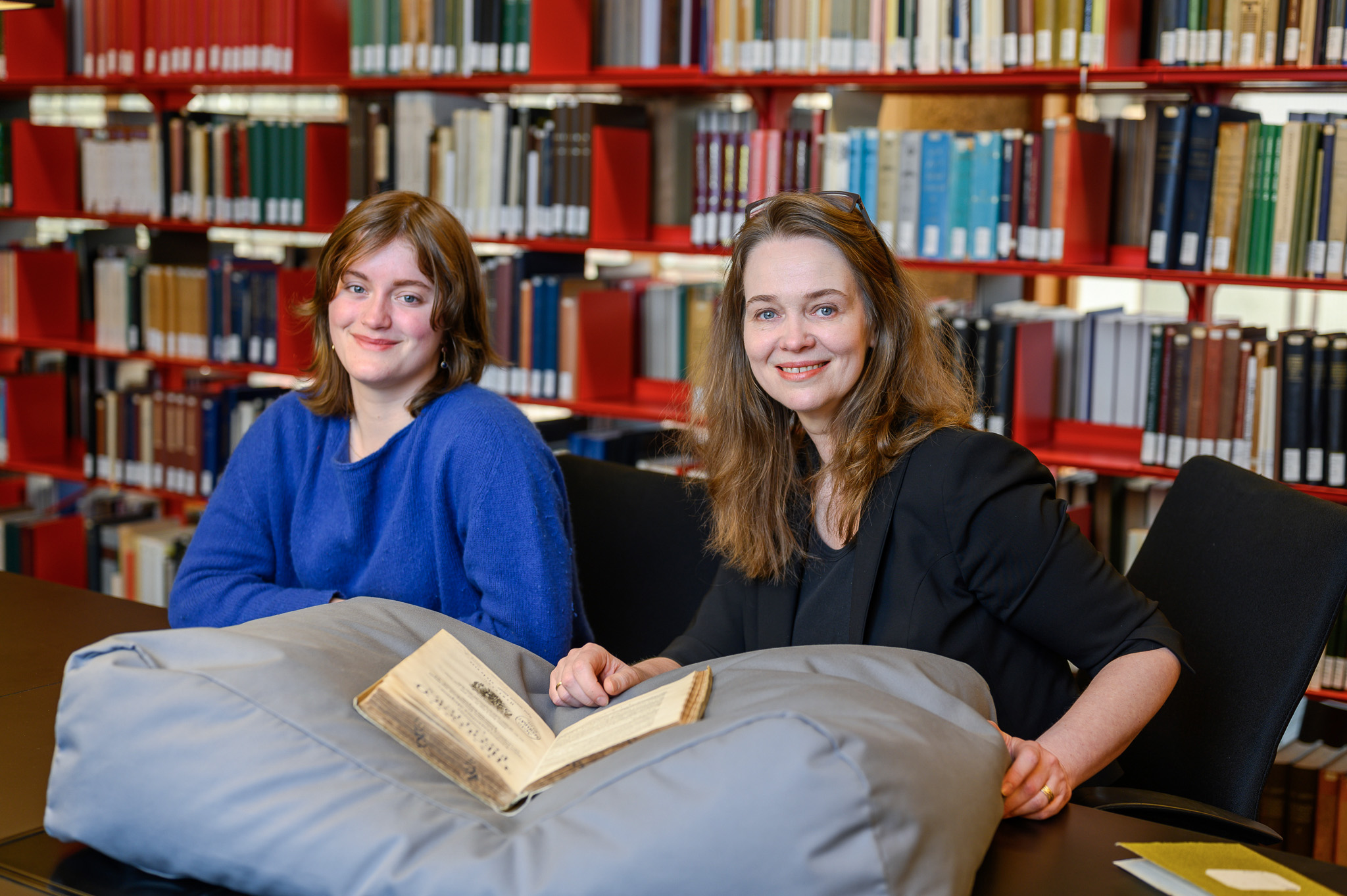
Charley Bohlmeijer (left) and Jacqueline Hylkema (right)
Help from LUC students
The main result of the research project will be a new special collection of forgeries - a huge enterprise, to which students of LUC that are selected for Hylkema's ‘research clinics’ are contributing. Hylkema: ‘Students work one semester as research assistants and help to map various forgeries. They have uncovered some wonderful sources. It also helps that we have an international as well as interdisciplinary student population at LUC. This enables us to track down forgeries in different disciplines and do further research in a range of languages.’
'When I open a pamphlet from 1610, I’m sometimes surprised that it’s not a contemporary political speech'
Charley Bohlmeijer participated in such a clinic last year and proved to have such an aptitude for this kind of research that after her graduation from LUC, she was asked back to become Hylkema’s right-hand. She helps making the collection inventory and researches pirated prints. Bohlmeijer: ‘When I open a pamphlet from 1610, I’m sometimes surprised that it’s not a contemporary political speech. Finding the truth is so important in today’s world, and with that, it’s a crucial theme at LUC. That long tradition of ‘fake news’ sometimes feels almost reassuring, although it mainly shows just how much we can learn from the past.’
With our donors’ help, LUF supports innovative and impactful projects by talented, often young researchers, such as dr. Jacqueline Hylkema. We award grants each year to research and teaching projects in various disciplines.
Text: Sabine Waasdorp (Faculty of Governance and Global Affairs)
Images: Arash Nikkhah
